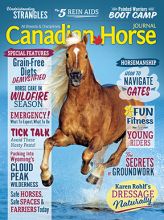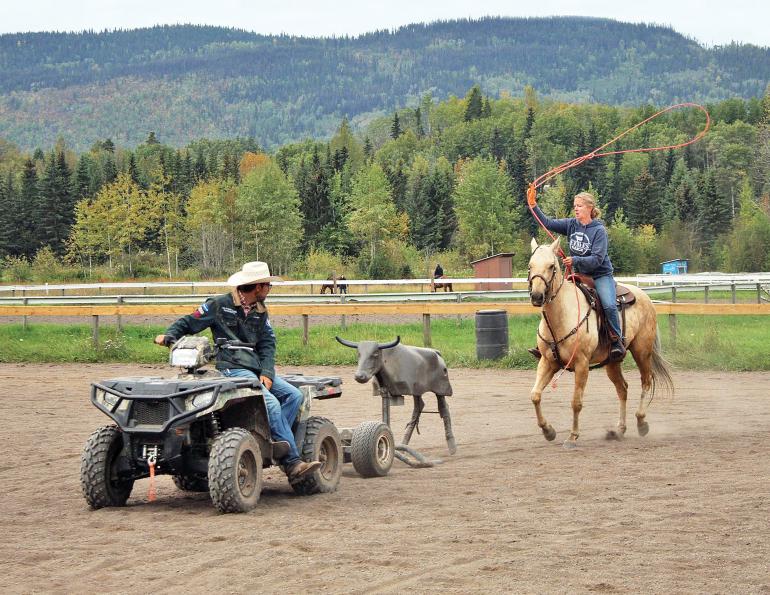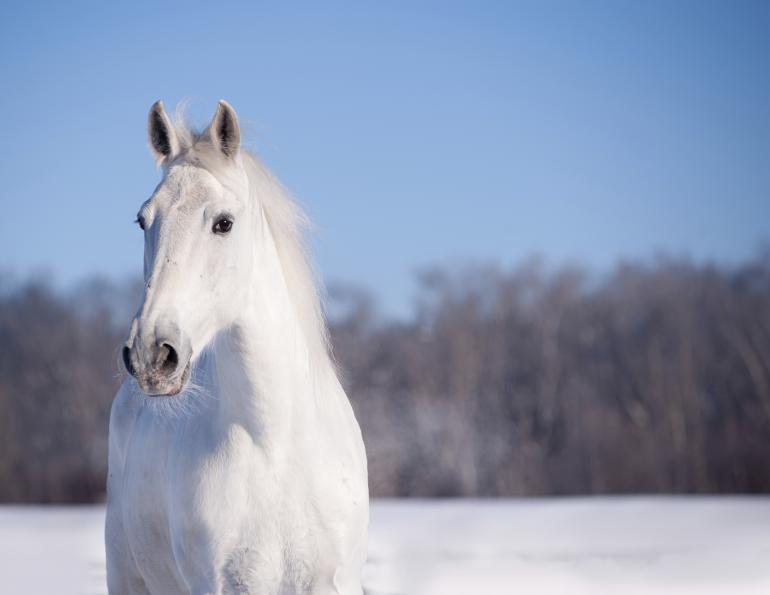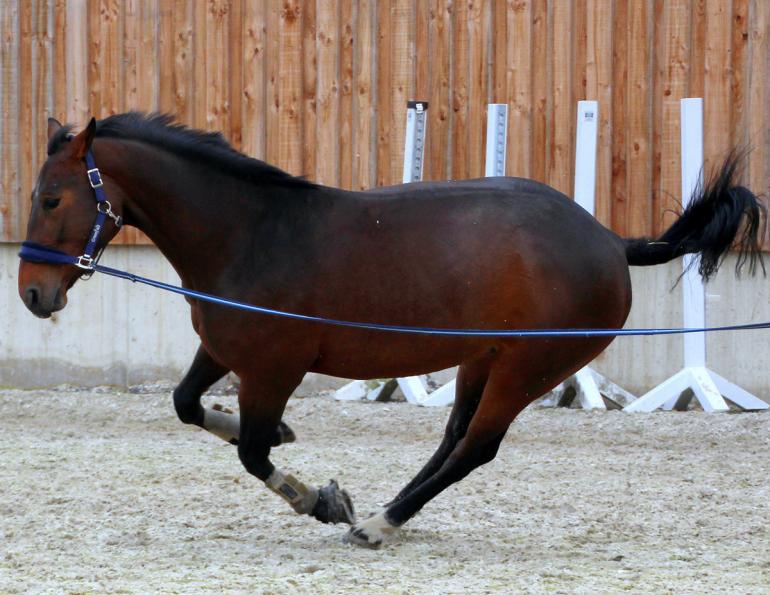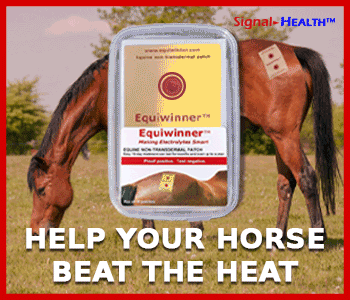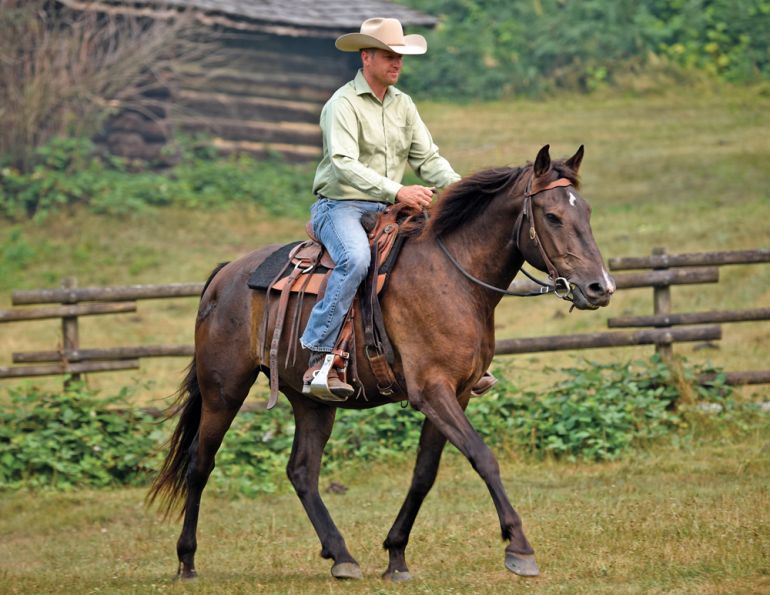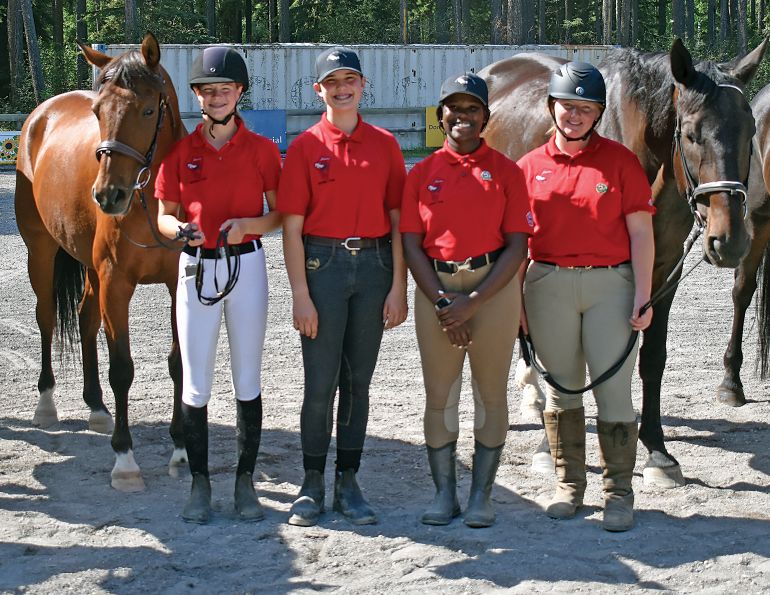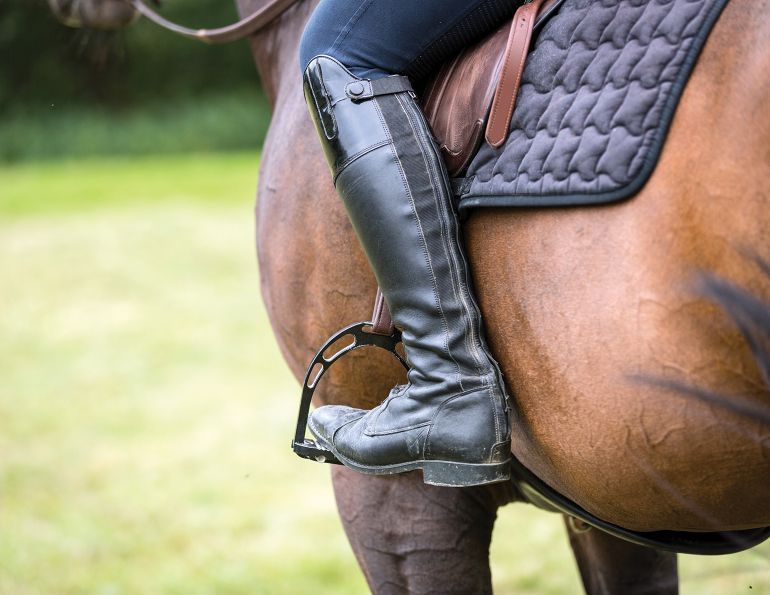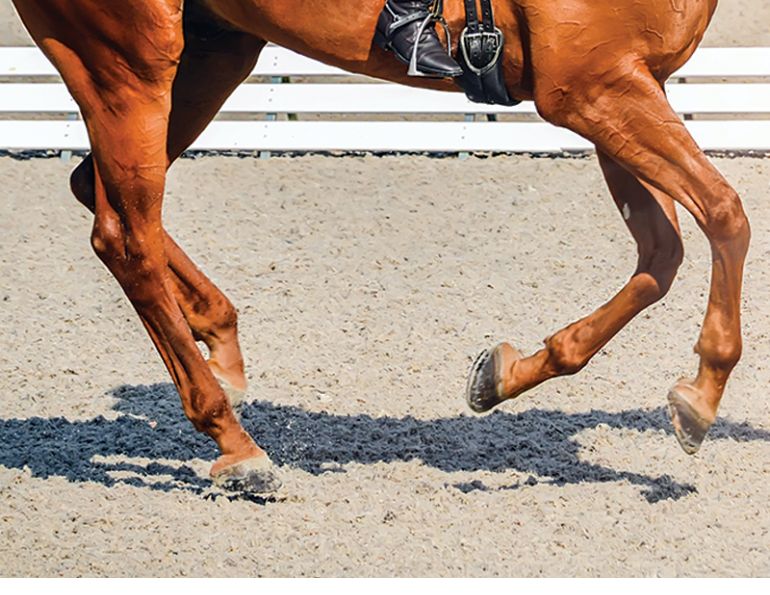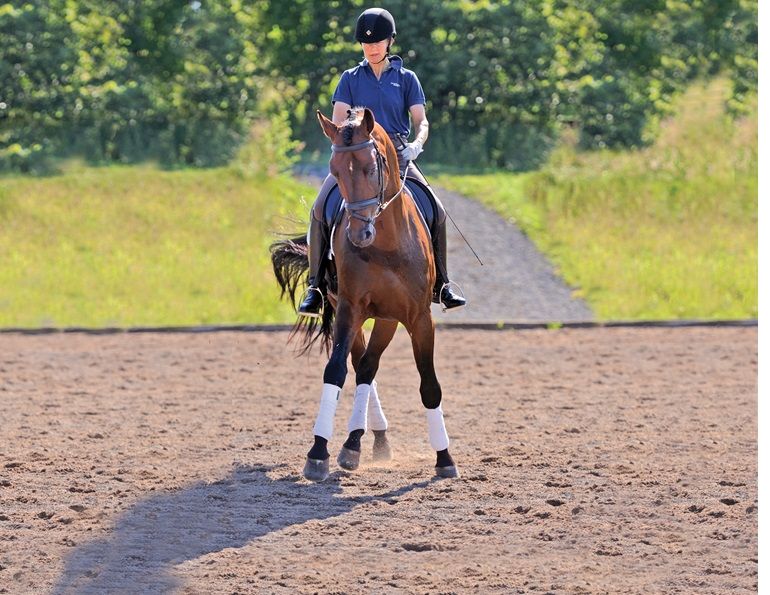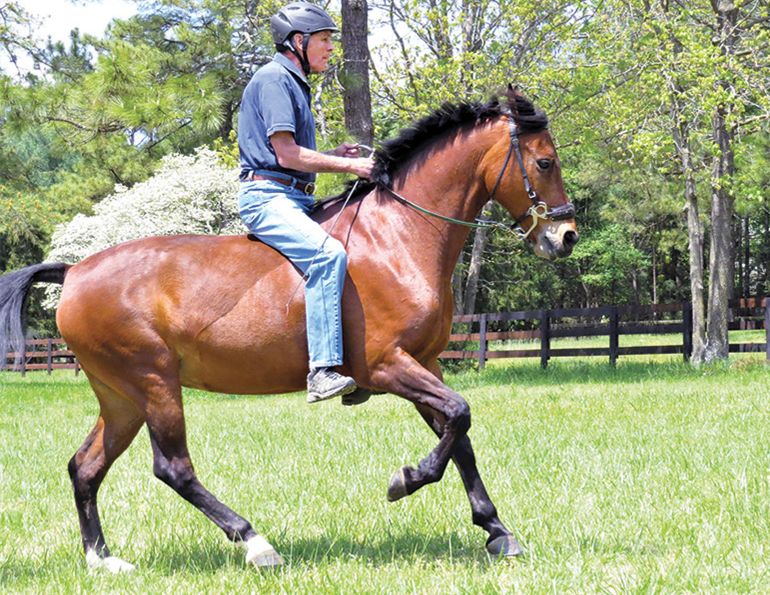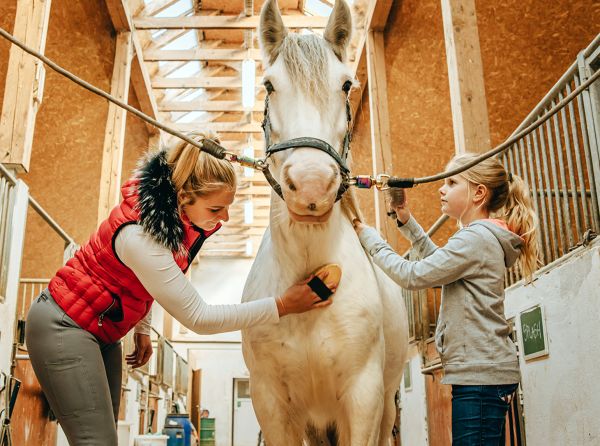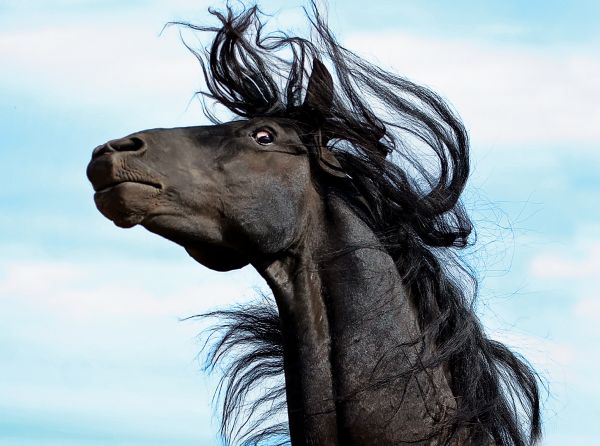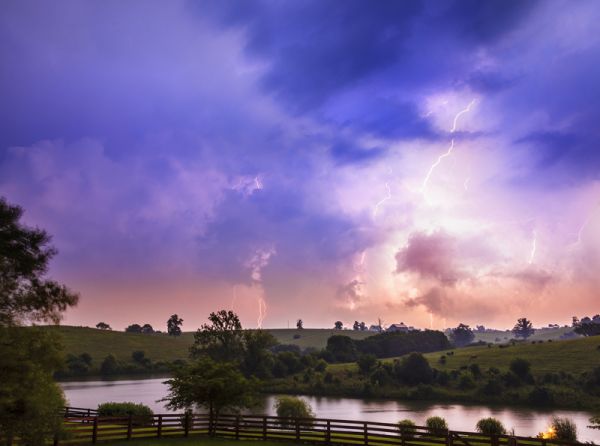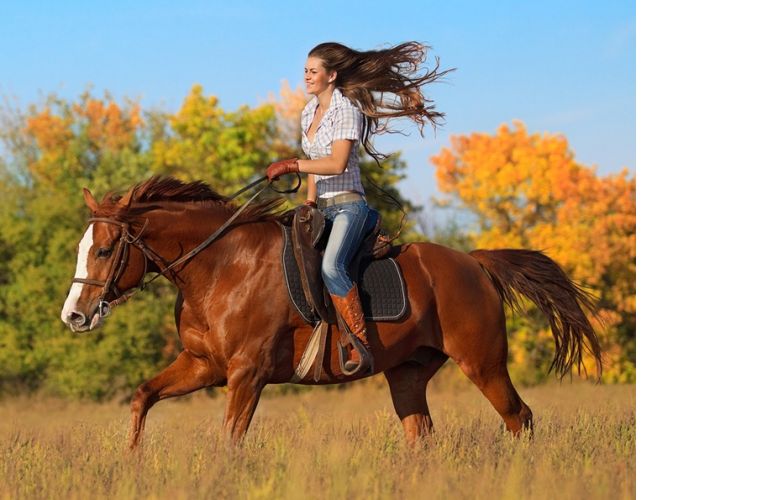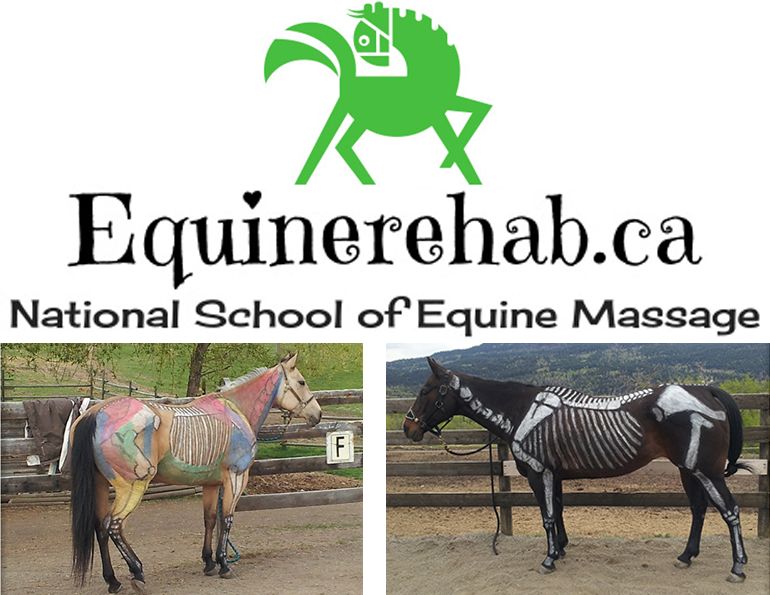By Tania Millen, BSc, MJ
Many riders dream of being a cowboy, and every cowboy needs to be able to rope a cow. Some riders grow up on ranches and learn to swing a loop from friends or relatives, but other wannabe cowboys aren’t so fortunate. So, how does the average rider with cowboy dreams learn that essential roping skill? And why rope a cow, anyway?
Growing up in suburbia and riding in English tack, cows weren’t part of my life. But I’ve dreamed of roping cattle for many years, so I finally took some beginner roping lessons with Cody Braaten, a competitive calf and team roper based in 150 Mile House, British Columbia. Braaten has roped for over 20 years, even though he’s less than 30 years old, and students enjoy his clear, relaxed teaching style. At the lessons I attended, there were no live cows. We started with the basics — learning how to coil the rope and build a loop, then swing it overhead and throw it at hay bales with plastic cow heads.
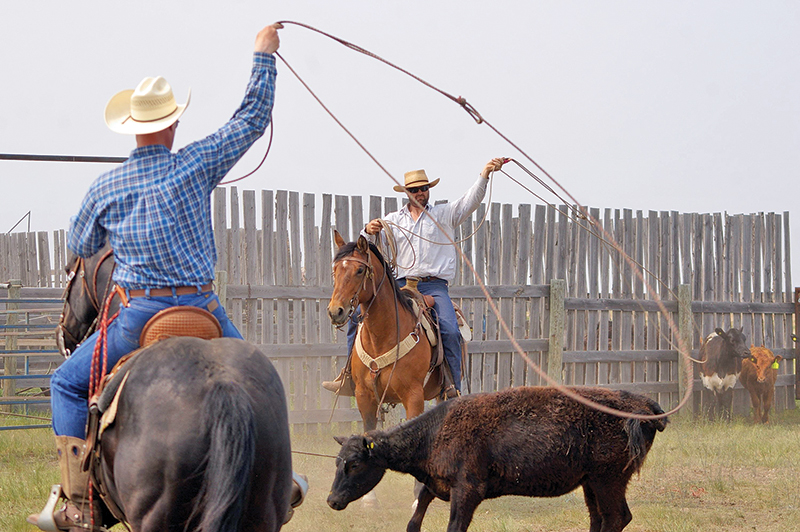
Ranch roping is quite different from the timed roping events seen at rodeos. It takes longer, and the goal is to keep the herd calm, and to catch, treat, and release the animal with a minimum of stress. Photo: Marian Finucane
The first loop I learned goes over the calf’s head and lands around its neck, while the second loop Bratten taught ideally just catches the horns. The third loop — which I didn’t master — catches the back feet or heels of the cow and has quite a different approach, swing, and throw than the first two. We progressed to roping the hay bale while sitting on our horses, and eventually we were throwing loops while trotting after a “dummy” cow pulled by an ATV. Unsurprisingly, my throws were inconsistent, so I was fortunate to be riding my chill mare Jewel, who just rolled her eyes when I roped her head by mistake.
Related: The World's Favourite Horse: The American Quarter Horse
On our last clinic day there was an informal horseback roping competition, and I managed to successfully rope the dummy three times in a row, which won me a new rope from Braaten — a ridiculously satisfying thrill for this non-cowboy.
After five days of lessons, it was obvious that successfully roping cattle isn’t just about whirling a rope overhead. Ropers must be able to steer with the left hand while holding excess coils of rope, move their horse one step at a time, plus swing a rope overhead, all while reading cattle and influencing their movement. There are also over 30 different types of loops to throw, depending on the cow’s position in relation to the horse. So roping is undeniably challenging — akin to patting your head, rubbing your stomach, and dancing a jig all at the same time.
But why would you rope a cow?
Many people are familiar with timed rodeo events such as calf roping and team roping where the fastest roper to catch their calf, wins. These events are competitive versions of activities that still occur on ranches across North America.
Ross Smith grew up on a ranch near Moose Jaw, Saskatchewan and genuinely learned to ride before he could walk. He’s president of the Canadian Ranch Roping Association and says, “The number one reason you rope an animal out on the ranch is because it’s sick. And because our [cowboying] job is on really big areas of land, it might be 10 miles to a corral. If the animal is sick, [getting him to a corral] is not going to happen. The alternative is to rope them… so we can treat them.”
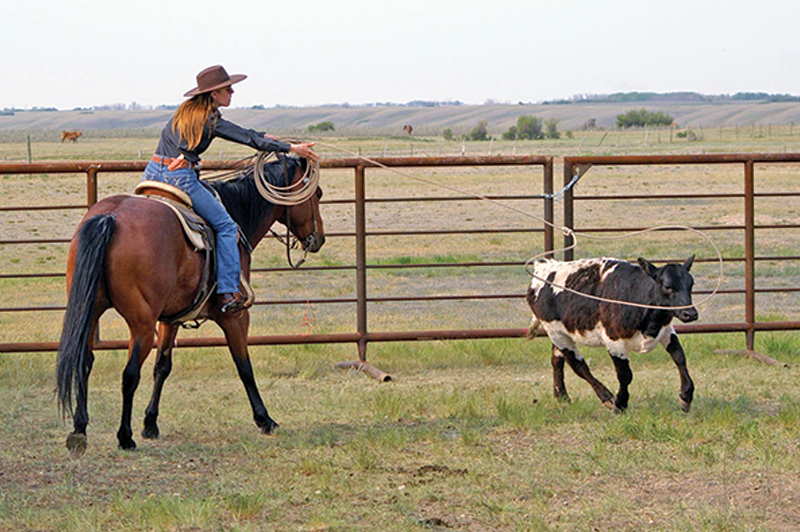
To succeed at ranch roping you need a horse that’s familiar with roping, and an understanding of the cow’s flight zone and how it will react. Photo: Marian Finucane
“We might take five or ten minutes… to gradually sneak up close to the animal and then try to rope it,” he explains. “Since it’s sick, we don’t want to chase it and further stress it more than it already is. If we can rope it standing still or just walking along, that’s more beneficial to the animal because the idea is to get them caught, treated, and released with the least amount of stress possible.”
Reducing stress is important for many reasons — not just for the health and welfare of the animals — but for financial reasons, too. Cattle are generally raised to be sold and slaughtered, so gaining weight is a priority and stress can cause cattle to lose weight.
Smith advises that it’s preferable to have two people to rope a cow. “One person ropes the head, then the other person ropes the back feet. You get the cow on the ground and then usually the header ties his rope off to the saddle horn, then gets off and ties the animal up. Then you can do whatever you need to. Then you have to get your ropes back off it once you let the cow go, which is often hard to do.”

Today’s ranch roping helps to preserve the traditions of the vaqueros whose skills and knowledge of horses and cattle were legendary. Photo: Ross Smith
“So number one, you need a horse that’s familiar with being roped off,” he says. “It’s not necessarily a rodeo trained horse because what happens out in the pasture is quite a bit different than what happens at the rodeo. At a rodeo, it’s bing, bang, boom and in seconds flat you’re done. When you treat an animal out at pasture it could be 15 minutes, depending on how cooperative they are and how well it goes. You have to keep in mind that you’re miles from home and if you get hurt it’s not good.”
“We use a long rope, too,” says Smith. “Usually 50 or 60 feet (15 to 18 metres). If we use a 60-foot rope, we might rope the animal 30 feet (10 metres) away from our horse. Whereas the rope used in rodeo events is only about 30 feet long, so the rope isn’t even long enough to throw it that far. It’s a completely different style than what you see at a rodeo.
Related: The 21st Century Cowboy
“The way that I rope on the ranch and the way we compete [in ranch roping events] is styled after the Spanish vaquero [cowboy] that came up from Mexico and into California back in the 1700s. Out on the open plains of California, they were able to take their time... Whereas in Texas, where there’s thick mesquite bush, if you found a cow, you had 100 feet [30 metres] to rope her or she was gone. So, things got faster and more aggressive. What you see at a rodeo now evolved from the original ranch roping, but it got more developed in Texas and to the east. Geography has a lot to do with how roping has developed.
“Ranch roping is based on skill, horsemanship, and stockmanship. You go slow,” adds Smith.
Riding slowly allows the roper to get much closer to the targeted animal while keeping the herd quiet and unstressed. Cows are flight animals just like horses, and each cow has a flight zone around it. So once a horse and rider enter that zone, the cow will move. The direction the cow goes depends on where the rider is in relation to the cow’s balance point — generally the shoulders. Understanding the flight zone and balance point of cows directly transfers to dealing with horses, which can help riders develop timing and feel in their horsemanship, too.
With so many skills to develop and practice, roping provides endless fun, but it’s practical, too. So maybe it’s time to indulge your inner cowboy and give roping a whirl.
BELOW: The author, Tania Millen, successfully roping the dummy! Photos: Shannon Skeels


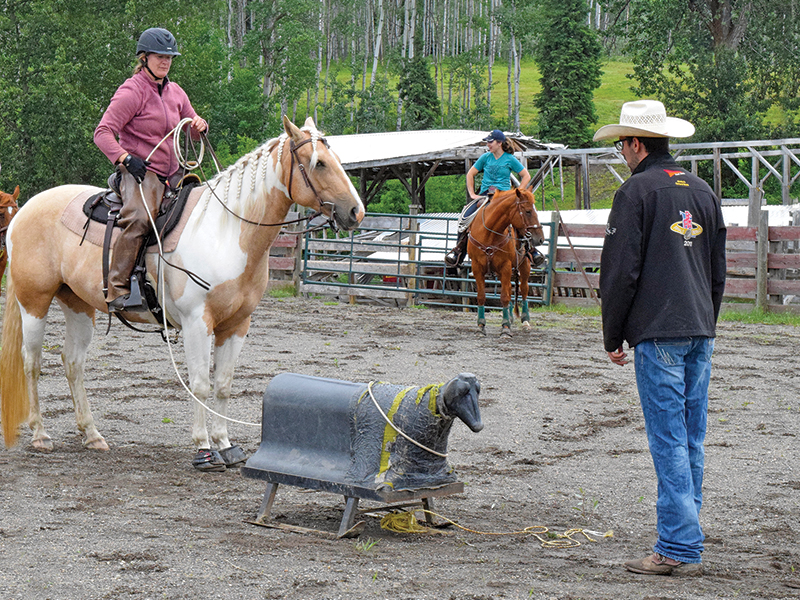
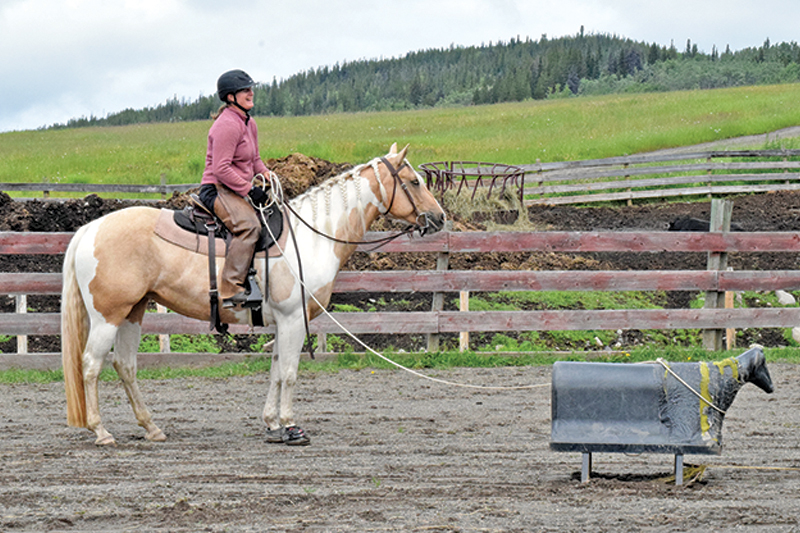
Photo: Tanis Payne


